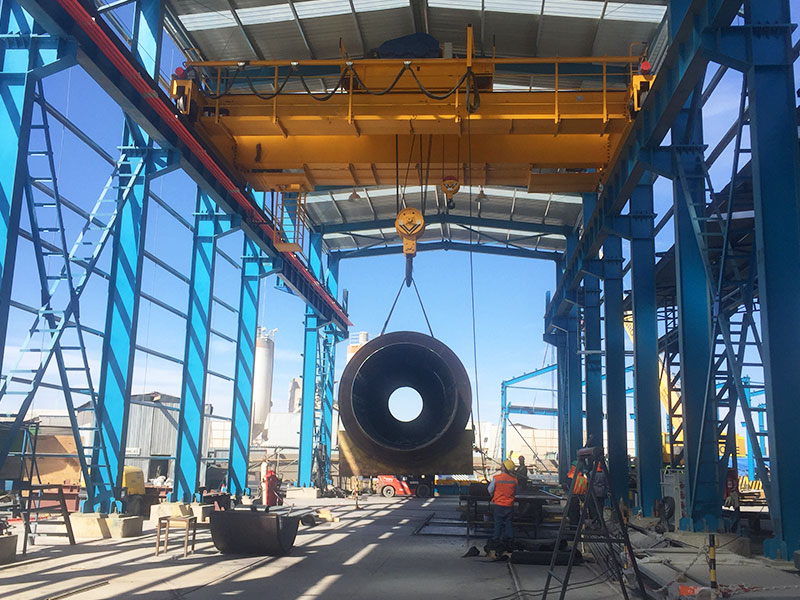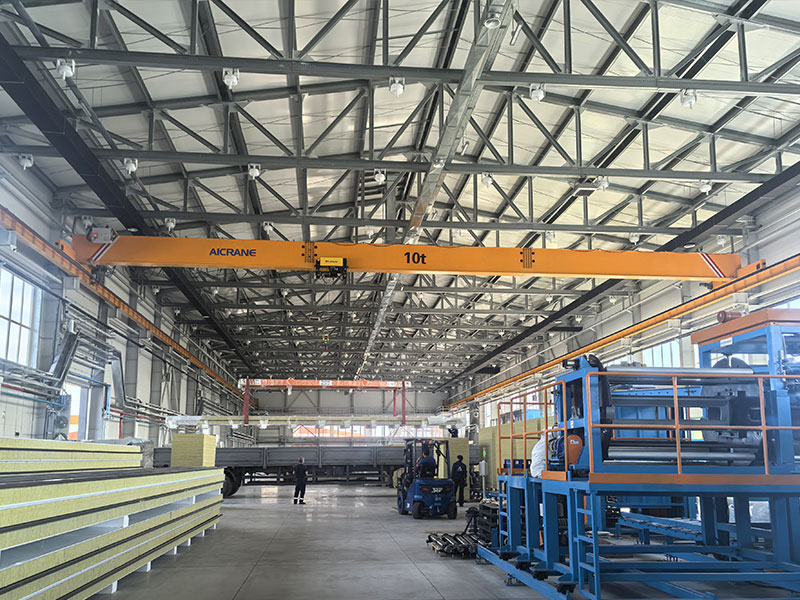Selecting the right bridge crane for a factory is not just about choosing a convenient lifting machine. The capacity of the bridge crane is one of the most crucial factors that directly determines safety, productivity, and long-term cost-effectiveness. Undersizing a crane can lead to accidents and downtime, while oversizing results in unnecessary capital investment and higher operating costs.
This article explains how to calculate the required bridge crane capacity for your factory, outlining the essential steps, key influencing factors, and practical examples.

Why Bridge Crane Capacity Matters
The bridge crane capacity refers to the maximum load that the crane is designed to lift safely. It includes not only the weight of the object itself but also accounts for attachments, lifting gear, and dynamic factors that affect the load during operation.
Choosing the correct capacity ensures:
-
Safety – Prevents structural overload, accidents, and equipment damage.
-
Efficiency – Matches the crane’s lifting ability to the actual workload.
-
Longevity – Reduces wear and fatigue on structural and mechanical components.
-
Cost-effectiveness – Avoids unnecessary expenses from oversizing.
Step 1: Identify the Maximum Load to Be Lifted
The starting point is to determine the heaviest single load that will be lifted in your factory. This is usually based on the type of material or product being handled:
-
Manufacturing plant: Weight of machinery, parts, or semi-finished products.
-
Steel mill: Coils, billets, slabs, or finished products.
-
Construction material factory: Precast concrete components.
-
Warehouse: Pallets or bundled goods.
👉 Example: If the heaviest steel coil weighs 7 tons, this becomes your baseline load.
Step 2: Consider Lifting Attachments
The crane rarely lifts the load directly. Attachments such as slings, hooks, spreader beams, magnets, or clamps add extra weight that must be included in the calculation.
-
A spreader beam may weigh 1–2 tons.
-
A large magnet system may add 0.5–1 ton.
👉 Continuing the example: If the coil weighs 7 tons and the spreader beam adds 1 ton, the total lifting weight is 8 tons.
Step 3: Add a Safety Margin
Engineering standards require a safety margin to account for unexpected conditions such as:
-
Inaccuracies in load weight estimation.
-
Dynamic effects from acceleration, deceleration, or sudden stops.
-
Load swing or misalignment.
Typically, a 15–25% margin is recommended.
👉 Example: 8 tons × 1.2 (20% margin) = 9.6 tons.
At this point, the crane must be rated for at least 10 tons to handle this load safely.

Step 4: Evaluate Frequency of Use (Duty Cycle)
The duty cycle or work classification of the crane influences capacity selection. International standards like FEM, ISO, or CMAA classify cranes into light, medium, heavy, and very heavy duty, depending on how often and how long they lift loads.
-
Light duty (FEM 1Am / CMAA Class C) – Occasional lifting, low frequency.
-
Medium duty (FEM 2m / CMAA Class D) – Regular lifting, moderate frequency.
-
Heavy duty (FEM 3m / CMAA Class E) – Frequent lifting of near-capacity loads.
-
Very heavy duty (FEM 4m / CMAA Class F) – Continuous lifting in demanding industries like steel or power plants.
👉 Example: If the factory frequently lifts 8–9 tons throughout the day, a 12.5-ton bridge crane may be more suitable than a 10 ton bridge crane, to prevent overloading.
Step 5: Consider Future Expansion
Factories often expand production capacity. Installing a crane that only meets today’s needs may lead to costly upgrades later.
-
If your current max load is 10 tons but expansion plans include heavier machinery, it may be wise to choose a 15-ton crane.
-
Oversizing slightly (by 20–30%) is often more economical than replacing or upgrading the crane within a few years.
Step 6: Analyze Operational Environment
The factory environment also influences eot crane capacity selection:
-
High temperatures – require de-rating of motor and structural capacity.
-
Outdoor use – wind loads add additional stresses.
-
Seismic zones – cranes must withstand additional dynamic forces.
-
Continuous shifts – may require higher capacity and stronger duty cycle.
These factors should be factored into final capacity calculations, often with input from structural engineers.
Practical Examples
Example 1: Light Manufacturing Factory
-
Heaviest load: 6 tons (machinery).
-
Attachment: 1 ton (lifting beam).
-
Total: 7 tons.
-
With safety margin (20%): 8.4 tons.
-
Recommended crane: 10-ton single girder bridge crane (light to medium duty).
Example 2: Steel Warehouse
-
Heaviest load: 12 tons (steel coils).
-
Attachments: 1.5 tons.
-
Total: 13.5 tons.
-
With safety margin (20%): 16.2 tons.
-
Recommended crane: 20-ton double girder bridge crane (medium to heavy duty).
Example 3: Precast Concrete Plant
-
Heaviest load: 22 tons (concrete beams).
-
Attachments: 2 tons (clamps).
-
Total: 24 tons.
-
With safety margin (25%): 30 tons.
-
Recommended crane: 30-ton double girder bridge crane, heavy duty class.
Example 4: Heavy Equipment Manufacturing
-
Heaviest load: 40 tons (machinery assembly).
-
Attachments: 3 tons.
-
Total: 43 tons.
-
With safety margin (20%): 52 tons.
-
Recommended crane: double girder 50 ton bridge crane, FEM 3m/4m duty cycle.
Mistakes to Avoid
-
Underestimating load weight – Always confirm actual weights with suppliers or technical documents.
-
Ignoring attachments – A common cause of undercapacity issues.
-
No safety margin – Working at maximum rated capacity shortens crane life and risks accidents.
-
Neglecting duty cycle – Even if a crane can handle the load, frequent use at near-capacity can cause structural fatigue.
-
Over-investing unnecessarily – While safety margins are essential, selecting double the required capacity can waste capital.
Engineering Tools for Calculation
Modern crane suppliers use tools such as:
-
Finite Element Analysis (FEA) – to simulate structural stresses under different load conditions.
-
3D CAD modeling – to test crane designs virtually before construction.
-
Load monitoring systems – to confirm actual operating conditions and adjust capacity decisions.
Consulting with crane manufacturers or engineers ensures that calculations meet international standards and local safety regulations.
Conclusion
Calculating the required bridge crane capacity for your factory is a systematic process involving the heaviest load, attachments, safety margins, duty cycle, future expansion, and environmental factors. By carefully analyzing these elements, factory owners can select a crane that ensures safety, efficiency, and long-term reliability.
As illustrated in the examples, a 10-ton crane may suffice for light manufacturing, while a heavy-duty 50-ton bridge crane is necessary for large-scale machinery production. The right calculation ensures that your investment is both safe and future-proof.